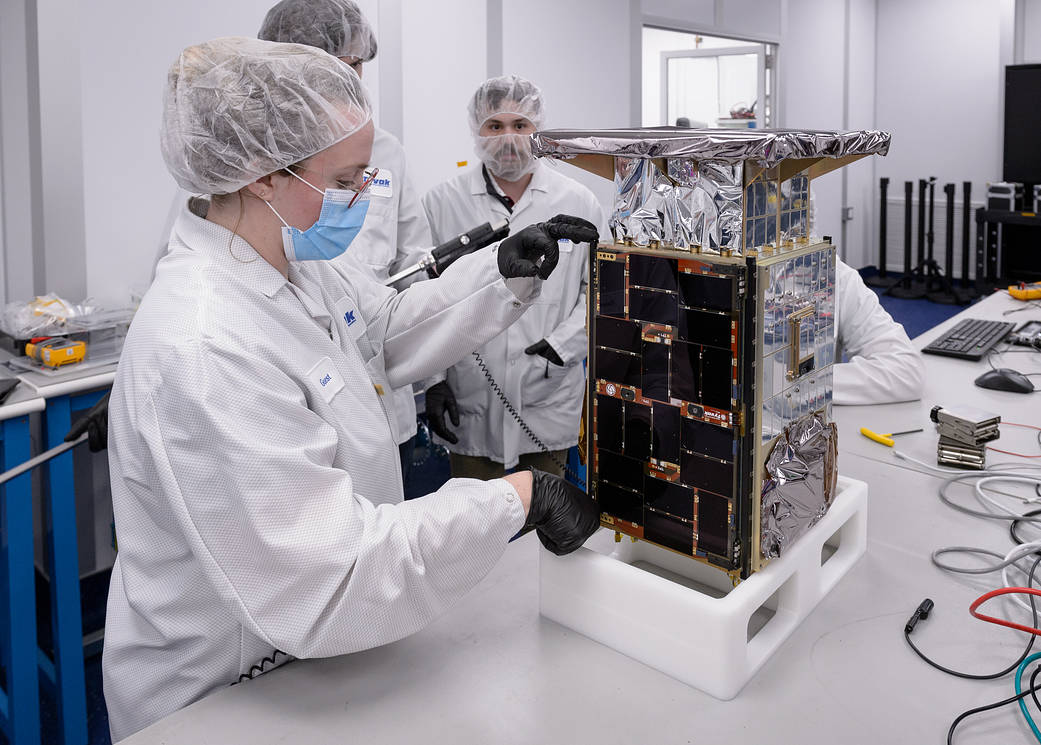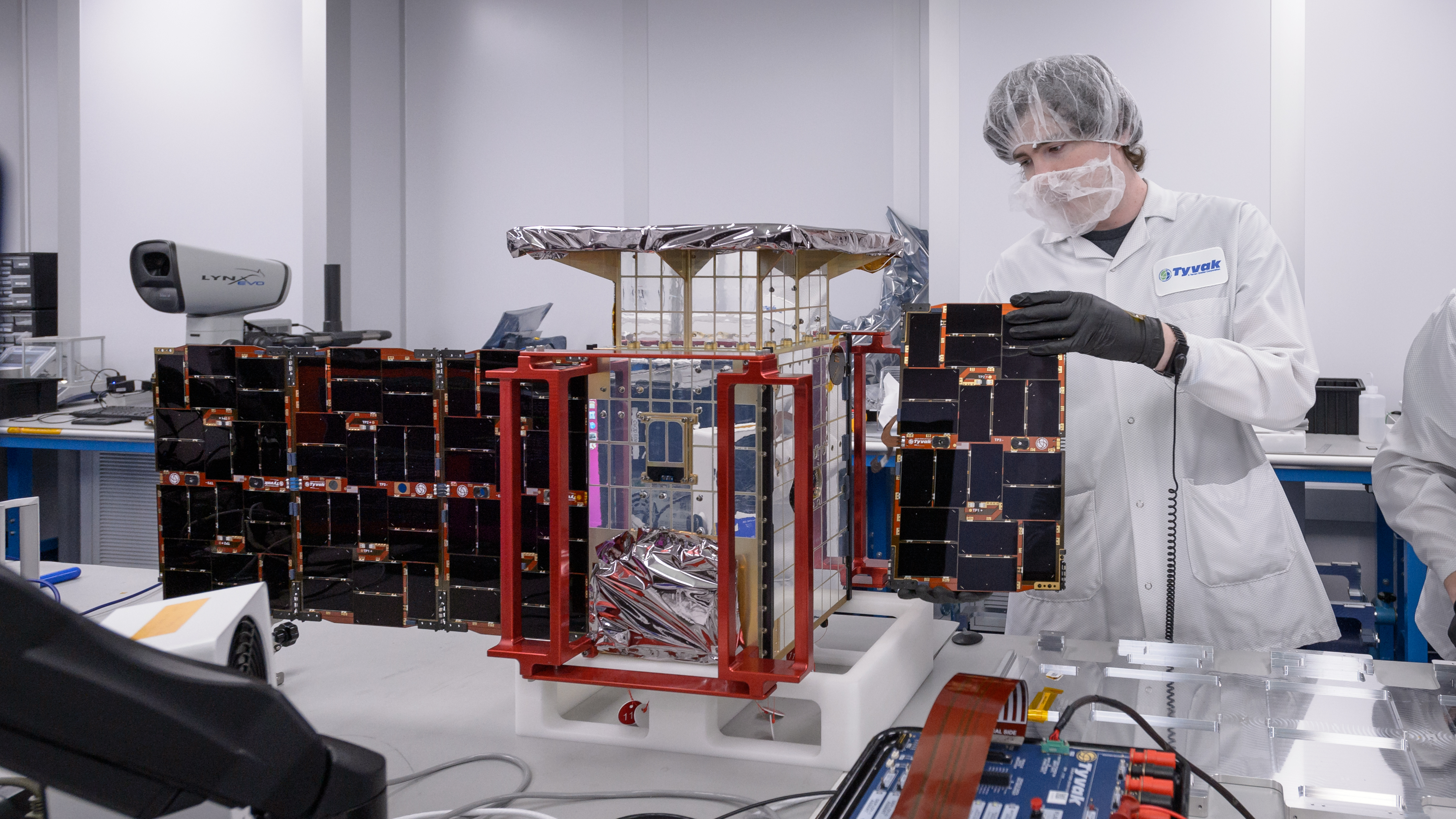The pathfinder for NASA’s lunar outpost will launch in May to test an orbit around the Moon that has never been flown before. The Cislunar Autonomous Positioning System Technology Operations and Navigation Experiment (CAPSTONE) is undergoing final construction – and with solar panel installation and vibration testing now complete, the small satellite will soon be shipped to its launch location in New Zealand.
CAPSTONE – operated by Advanced Space – will help pave the way for NASA’s future exploration of the solar system, testing out this significantly elongated and halo-shaped orbit before arrival of Gateway, a next-generation space station that will provide access to the Moon and potentially beyond. Like Gateway, CAPSTONE continues the tradition of commercial partnerships, with five companies, including American small businesses, making contributions. The spacecraft was built and tested by Tyvak Nano-Satellite Systems, Inc., a Terran Orbital Corporation in Irvine, California, and will be launched by Rocket Lab of Long Beach, California.
Some of those partners are joining members of the CAPSTONE team at this year’s Space Symposium, sharing the project’s work and celebrating the induction of small satellite technologies into the Space Technology Hall of Fame. Small satellites, including CubeSats like CAPSTONE, can make meaningful contributions to science and exploration at a lower cost and faster cadence.
The CAPSTONE mission sends a CubeSat – about the size of a microwave oven – to study this orbit for at least six months, launching via a trajectory known as a ballistic lunar transfer. This highly efficient trajectory uses very little fuel, making use of the Sun’s gravity to reach this unique orbit around the Moon.
By taking advantage of the precise points between the Earth and Moon where the gravity from both is balanced out, spacecraft traveling along this orbital path can save energy to maintain the orbit. It also takes less fuel to enter the orbit because of its elongated shape, only 1,000 miles away from the North Pole at its nearest pass to Earth every six and a half days.
During its journey along this path, CAPSTONE will test out spacecraft-to-spacecraft navigation and communications systems with NASA’s Lunar Reconnaissance Orbiter, another spacecraft in orbit around the Moon. By demonstrating that two orbiting spacecraft can communicate and track their positions independent of Earth, NASA is showing how future missions could pinpoint their place in space as they reach for more distant destinations.
Now that testing is completed, CAPSTONE is on track to launch next month and begin testing the path that NASA’s Gateway will follow in the years to come.
CAPSTONE is commercially owned and operated by Advanced Space in Westminster, Colorado. It represents an innovative collaboration between NASA and industry to provide rapid results and feedback to inform future exploration and science missions.
NASA’s Small Spacecraft Technology program within the agency’s Space Technology Mission Directorate (STMD) funds the demonstration mission. The program is based at NASA’s Ames Research Center in California’s Silicon Valley. The development of CAPSTONE’s navigation technology is supported by NASA’s Small Business Innovation Research and Small Business Technology Transfer (SBIR/STTR) program, also within STMD. Advanced Exploration Systems within NASA’s Exploration Systems Development Mission Directorate funds the launch and supports mission operations. The Launch Services Program at NASA’s Kennedy Space Center in Florida manages the launch.
For news media:
Members of the news media interested in covering this topic should reach out to the NASA Ames newsroom.
Author: Frank Tavares, NASA’s Ames Research Center
Top image: Rebecca Rogers, systems engineer, takes dimension measurements of the Cislunar Autonomous Positioning System Technology Operations and Navigation Experiment (CAPSTONE) spacecraft at Tyvak Nano-Satellite Systems, Inc. in Irvine, California. Credit: NASA/Dominic Hart

























